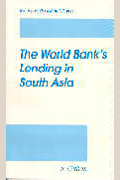In the last two decades, the World Bank’s contributions to economic development in South Asia have been substantial, increasing significantly from previous years. Focusing on India, Pakistan, Bangladesh, Sri Lanka, Nepal, Bhutan, and Maldives, S. Guhan analyzes the Bank’s lending in South Asia from 1971 to 1990, exploring what the Bank attempted, achieved, and failed to achieve during those years. Guhan shows that the 1970s and 1980s were particularly active as the Bank experienced a phenomenal growth and diversification in project lending. This period may also be something of a watershed, he maintains, since the coming decades in South Asia are likely to see a slowing-down in the growth of overall lending levels, as well as a shift towards non-project, adjustment lending. Guhan sets out essential background information for understanding the development context in South Asia; discusses the important characteristics of project lending in the region; reviews lending strategies, the policy dialogue, and project impact in terms of major sectors and borrowers; and puts together an overall assessment of the Bank’s lending experience in the two decades. Looking ahead, he asserts that the coming years will be both lean and difficult for the Bank and its borrowers in South Asia. S. Guhan is a senior fellow in the Madras Institute of Development Studies in India.
Author

